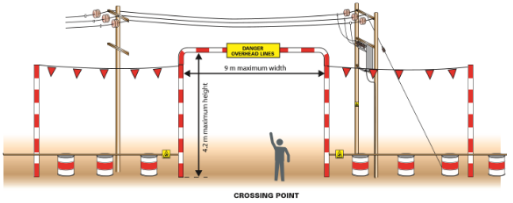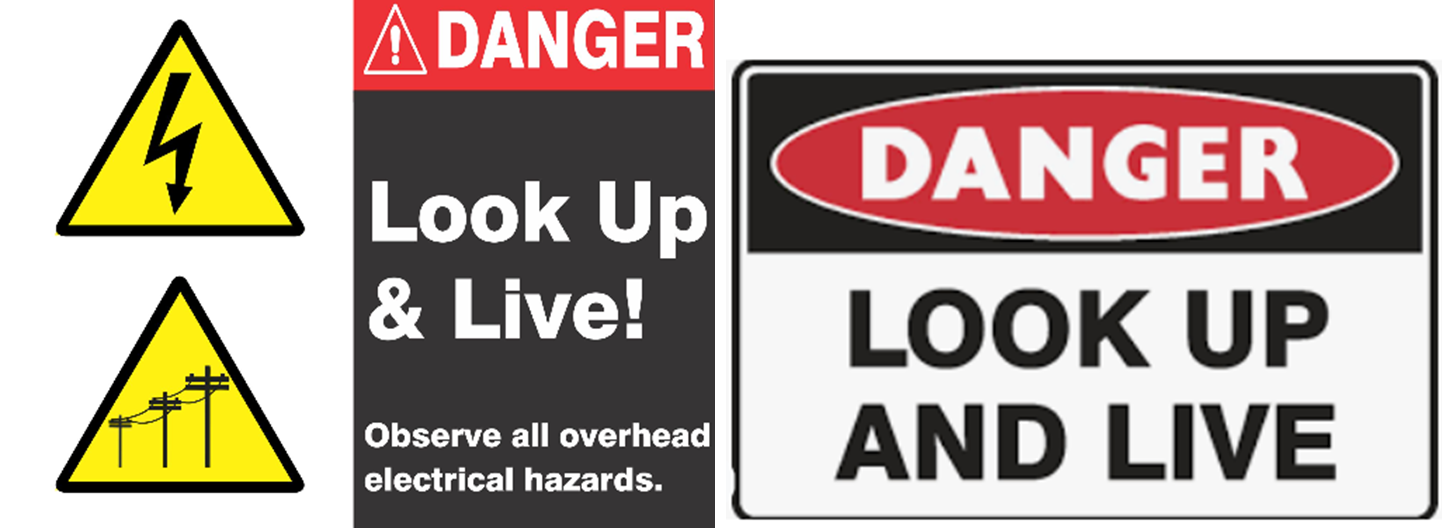RISK – Contacting live services
“Physically identify” means to visually confirm.

- Identify all likely instances where work activities will take place in vicinity of OHLE (overhead line equipment), including travelling beneath with insufficient clearance
- Assess known oversize loads against gazette roads that have live OHLE crossings
- Work through the hierarchy of control and adopt the most effective controls possible (or a combination of multiple controls)
- Review individual asset owner's guidance with regards to work restrictions in vicinity of their OHLE
- determine if an electrical spotter is required
- Assume all OHLE is live unless proven otherwise

Example of nudge bars used on site to protect OHLE and structures.

Example of control measures when vehicle access involves crossing OHLE.

Examples of effective signage that can be installed at operator eye level.
For more information on safe approach distances, see guidance in 4.C.
Related GMRs
Related Procedures
